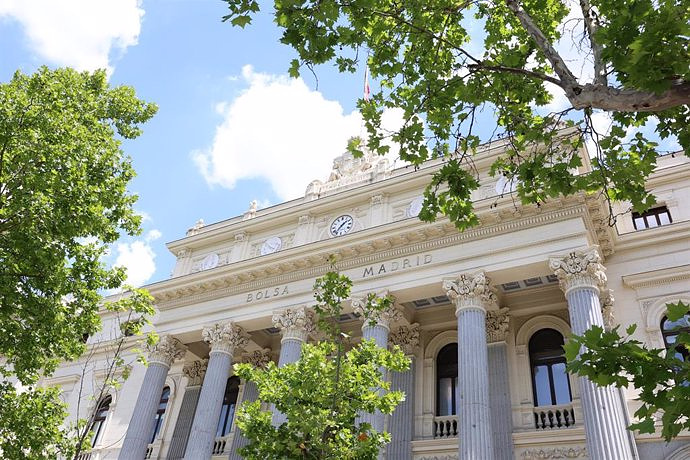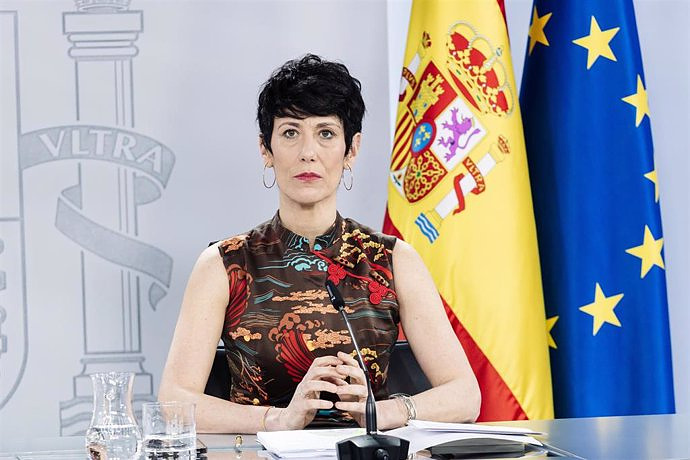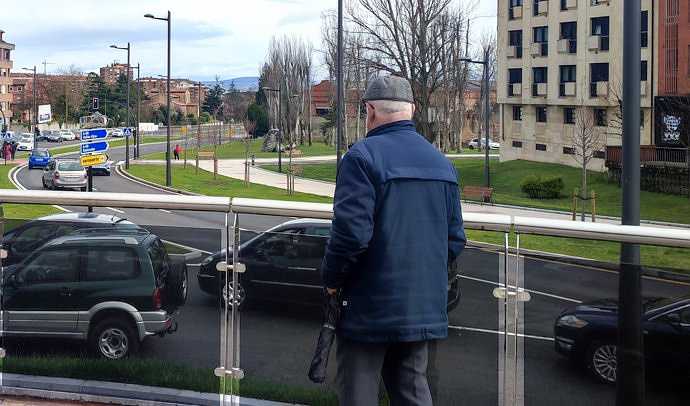Are you a part of the crew?, ask feed at the same time as he fixes his gaze at me via the mirror in the car.
a Passenger, I say.
Feed looks weird on me, mumbling something to himself in German and shakes his head. The clock is seven in the morning and the harbour in Hamburg is full of activity. Havnevakta running fast past the cranes that move on things and the tall towers of shipping containers.
at the same time as the vast hull of the ship comes into view, ports I in a world where everything is bigger, noisier and more dangerous than life on land. It is 300 meters long and 100,000 tonnes heavy ship in front of me will be my home for the next 15 days.
Four months earlier I had reserved space on board a cargo ship that would carry me from Hamburg to Halifax, Nova Scotia. The european arbeidsvisumet my kept on to go out and I was hoping that I could get myself to the west coast of Canada before christmas. Campaigns as the Swedish "flyskam" had opened my eyes to how bad for the climate it is to fly, and I decided that it was out of the question to order the airline ticket.
Since 2017 I had released over 14 tonnes of carbon only through the flights. I realized that everything I do to decrease the carbon footprint of my home in Milan, next to riding a bike to work, throwing less food and rarely buy new clothes, not have meant something if I fly only one trip between Canada and Europe.
If you are travelling sustainably in Europe, one can often take the train instead of fly, but to get to Canada from Europe is a bit more complicated. Why was a cargo ship was the obvious choice to drop out the least amount of carbon.
Carriers sell excess kabinplass through some selected travel agencies. I booked my travel through Slowtravel Experience, which has an office in Berlin. This is still a nisjete way to travel, and the ships have rarely space for more than around a dozen passengers, so it is important to book his journey in good time, especially in the feriesesongen. One must also be able to be flexible when it comes to the departure date. I got the message only a few days before departure, that the ship came to drag three days before the schedule. Had I not been in Germany, I had missed the boat.
Here you will find options for flights dinsideI expected a long and tiring journey, and had considered several dozen books, and downloaded movies. I as for me, bad nights where my head was far down in a spypose, but my experience on board could not have been better.
The other two passengers, Tony from the Netherlands and Janos from Germany, was also on the tour of the same eco-friendly reason as me. To hang out with them meant that the time flew.
the Cabins were basic and comfortable. They had a private toilet and shower, two single beds, a desk and sea views as far as the eye could see. The 25 in the crew, which was a mix of filipino and eastern european men, were friendly and attentive.
I had only men as company the entire trip, but Isabel Garden, a Swedish student I met through a friend, went on the same trip earlier in 2019, and said that she had a pleasant experience as the only woman: "the Crew was friendly, respectful and polite from the moment I came on board."
When we were for ourselves, the age of Janos, Tony and I the days with the darts-tournaments, jigsaw puzzles and the board game Risk. One morning, we could play chess on the deck in the glorious sunshine. The next day was tony's strikkelue taken by the winds of hurricane strength off Newfoundland.
During port calls in Antwerp, and Liverpool, we were allowed to go ashore and explore the places in the course of the day. Back on board, we developed quickly a daily routine: morning coffee on the bridge with the sociable first officer, social meals with crews and hourly trips along the outer decks, with the icy sjøvinden that hit my face and the dark water below us.
EXPLORE: The days the ship was in the country for extended periods of time got the passengers to go out and experience the area. Photo: Private/Will Vibert Show moreA highlight was a tour we had a morning of crew. Passengers have only limited access to the parts of the ship where several of the crew working. So to get the opportunity to go through the inside of the ship from bow to stern was an eye opener. In addition to the almost 4.000 containers that were stabla on the outer covered, there were six "roll-in, roll-out"deck that had everything from Range Rovers and american militærbiler to a fuselage. At the same time as the captain explained how complex the operation was, I stood and admired the general size of everything around us. An industry that is responsible for transporting 90 percent of all goods in the world.
Life on board was so immersive that I after a few days not bothered me about the quality of the food. The passengers eat with the crew, and the meals are meat, lots of starch and little vegetables. An example can be casseroles with mashed potatoes or chicken buzzed in bacon. I realized quickly that the luxury of living on the lake is not necessarily fantastic food and good mattresses, but rather life on the lake itself. The stupefying pace and the feeling of a fairy tale – it is the real luksusfølelsen. When I finally put the legs down on the dry soil in Halifax, it was hard to say have it the store ship that had begun to feel like a home.
Even though I had come to Halifax, there were more than 6000 kilometres left before I was home. It is actually longer than the distance between London and New York. This time, I would travel by train. With an infrastructure that involves a few passenger trains are traveling across Canada, a week-long experience rather than a quick train ride.
There is no train that goes from coast to coast, so after a on sj's night trains from Halifax, I spent a night in Montreal and one in Toronto before I went on board The Canadian, VIA Rails on sj's night trains to Vancouver. Since it is designed for tourists, it has a charming spisevogn, observation deck with glasskupler, live music and even wine tastings in the course of the four nights long trip.
That on the ship I was immediately impressed by how welcoming the crew were, and how genuinely happy they seemed to be there. The food was also impressive. For brunch we could make airy pancakes made of buttermilk who drowned in maple syrup – a big loss in Europe. Dinners with trout, fried chops of veal and the fresh vegetables were lovely. The atmosphere among the passengers was jovial. We ate together and shared travel stories in the bar.
CANADIAN ROCKIES: Rocky Mountains as seen from Banff National Park in Alberta, Canada. Photo: Shutterstock/Stuart Forster Show moreIn the same way as on the ship, did the large landscape that passed my window the whole trip special. I saw the endless pine woods in the north of Ontario, the frozen prairies and the magnificent Rocky Mountains in the west. Everything I saw sparkled in the snow these days in the middle of December.
To sit in the togvogna with the glass dome and watch the burning sun go down over a white forest in Quebec, and then to wake up to a snow storm in Manitoba, it meant that I got a deeper sense of belonging to this land I call home. It reaffirmed why I wanted to protect this natural beauty.
When I stepped off the train in Vancouver, having traveled more than 13 000 km and crossed nine time zones, felt car journey through the harbour of Hamburg a early morning that a lifetime ago. To travel around the world with a low carbon footprint may not be convenient and easy, but I proved to myself that it was possible. Now it is time to plan your next adventure.
TravelThe fifteen days long journey by cargo ship from Hamburg to Halifax, booked through Slowtravel Experience spent just under 100 euros every day in a cabin for two people, including full board and karbonutlikning. The most well-known transportselskapene which offers space for passengers is Hamburd Süd and Grimaldi Lines. Other companies that offer this is New Zealand Freighter Travel, the Cruise People, and Maris Freighter Cruises. Togreisa was booked through VIA Rail Canada. The Ocean travels from Halifax to Montreal three times a week, and costs from 68 pounds one way. Daily train from Montreal to Toronto costs from the 22 pound one way and The Canadian from Toronto to Vancouver runs twice a week from 271 pounds each way.
Carbon footprint (calculated from the weight of the passenger) Fly from Frankfurt to Vancouver: 1.3 tonnes (Source: MyClimate Foundation) Cargo ship from Hamburg to Halifax (via Antwerp and Liverpool): 5,3 kg (Source: International Council on Clean Transportation)
Train between Halifax and Vancouver: 204,2 kilograms (Source: VIA Rail)
Total Co₂ emissions from Hamburg to Vancouver was 209,5 kg.
What is the cheapestbus, train, or plane? dinside
Want to discuss?
Visit Dagbladet debate!
 Exploring Cardano: Inner Workings and Advantages of this Cryptocurrency
Exploring Cardano: Inner Workings and Advantages of this Cryptocurrency Seville.- Economy.- Innova.- STSA inaugurates its new painting and sealing hangar in San Pablo, for 18 million
Seville.- Economy.- Innova.- STSA inaugurates its new painting and sealing hangar in San Pablo, for 18 million Innova.- More than 300 volunteers join the Andalucía Compromiso Digital network in one month to facilitate access to ICT
Innova.- More than 300 volunteers join the Andalucía Compromiso Digital network in one month to facilitate access to ICT Innova.-AMP.- Ayesa acquires 51% of Sadiel, which will create new technological engineering products and expand markets
Innova.-AMP.- Ayesa acquires 51% of Sadiel, which will create new technological engineering products and expand markets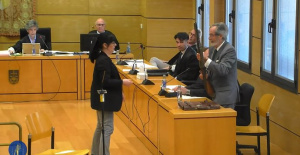 The Ciudad Real Court sentences the man who killed a thief with two shots in his home to 6 years
The Ciudad Real Court sentences the man who killed a thief with two shots in his home to 6 years PP and PSOE clash in the Senate over Koldo's appearance after a socialist writing on a work plan
PP and PSOE clash in the Senate over Koldo's appearance after a socialist writing on a work plan FIFA and UEFA warn that "the protection and institutional stability of the RFEF must be prioritized"
FIFA and UEFA warn that "the protection and institutional stability of the RFEF must be prioritized" The parties close the Basque election campaign
The parties close the Basque election campaign How Blockchain in being used to shape the future
How Blockchain in being used to shape the future Not just BTC and ETH: Here Are Some More Interesting Coins Worth Focusing on
Not just BTC and ETH: Here Are Some More Interesting Coins Worth Focusing on Valencia displays its "innovative and technological potential" at the Emerge Americas event in Miami
Valencia displays its "innovative and technological potential" at the Emerge Americas event in Miami The CSIC incorporates the challenges of robotics, nanotechnology and AI in the new strategic plan for biomedicine
The CSIC incorporates the challenges of robotics, nanotechnology and AI in the new strategic plan for biomedicine Innovation allocates 9.1 million to train 74,000 people and guarantee digital inclusion
Innovation allocates 9.1 million to train 74,000 people and guarantee digital inclusion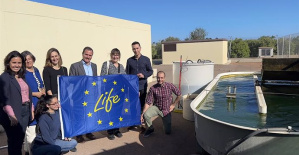 LIFE SPOT manages to develop new green treatments that eliminate groundwater contamination
LIFE SPOT manages to develop new green treatments that eliminate groundwater contamination A million people demonstrate in France against Macron's pension reform
A million people demonstrate in France against Macron's pension reform Russia launches several missiles against "critical infrastructure" in the city of Zaporizhia
Russia launches several missiles against "critical infrastructure" in the city of Zaporizhia A "procession" remembers the dead of the Calabria shipwreck as bodies continue to wash up on the shore
A "procession" remembers the dead of the Calabria shipwreck as bodies continue to wash up on the shore Prison sentences handed down for three prominent Hong Kong pro-democracy activists
Prison sentences handed down for three prominent Hong Kong pro-democracy activists ETH continues to leave trading platforms, Ethereum balance on exchanges lowest in 3 years
ETH continues to leave trading platforms, Ethereum balance on exchanges lowest in 3 years Investors invest $450 million in Consensys, Ethereum incubator now valued at $7 billion
Investors invest $450 million in Consensys, Ethereum incubator now valued at $7 billion Alchemy Integrates Ethereum L2 Product Starknet to Enhance Web3 Scalability at a Price 100x Lower Than L1 Fees
Alchemy Integrates Ethereum L2 Product Starknet to Enhance Web3 Scalability at a Price 100x Lower Than L1 Fees Mining Report: Bitcoin's Electricity Consumption Declines by 25% in Q1 2022
Mining Report: Bitcoin's Electricity Consumption Declines by 25% in Q1 2022 Oil-to-Bitcoin Mining Firm Crusoe Energy Systems Raised $505 Million
Oil-to-Bitcoin Mining Firm Crusoe Energy Systems Raised $505 Million Microbt reveals the latest Bitcoin mining rigs -- Machines produce up to 126 TH/s with custom 5nm chip design
Microbt reveals the latest Bitcoin mining rigs -- Machines produce up to 126 TH/s with custom 5nm chip design Bitcoin's Mining Difficulty Hits a Lifetime High, With More Than 90% of BTC Supply Issued
Bitcoin's Mining Difficulty Hits a Lifetime High, With More Than 90% of BTC Supply Issued The Biggest Movers are Near, EOS, and RUNE during Friday's Selloff
The Biggest Movers are Near, EOS, and RUNE during Friday's Selloff Global Markets Spooked by a Hawkish Fed and Covid, Stocks and Crypto Gain After Musk Buys Twitter
Global Markets Spooked by a Hawkish Fed and Covid, Stocks and Crypto Gain After Musk Buys Twitter Bitso to offset carbon emissions from the Trading Platform's ERC20, ETH, and BTC Transactions
Bitso to offset carbon emissions from the Trading Platform's ERC20, ETH, and BTC Transactions Draftkings Announces 2022 College Hoops NFT Selection for March Madness
Draftkings Announces 2022 College Hoops NFT Selection for March Madness
